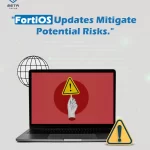VMware vCenter Server is a core of modern IT infrastructure, providing a centralized management console for virtualized environments. It empowers organizations to efficiently manage and optimize their virtual machines, data stores, and network resources. However, even this powerful tool is not protected from security threats.
Recently, a critical vulnerability was discovered in VMware vCenter Server that could potentially allow cybercriminals to gain unauthorized access and control over virtualized environments. This vulnerability poses a significant risk to the security and integrity of organizations relying on VMware for their IT operations.
In this article, we will delve into the details of this critical flaw, its potential consequences, and the steps organizations can take to reduce the risk and protect their virtual infrastructure.

Vulnerability Details: CVE-2024-38812
CVE-2024-[Actual CVE ID] is a critical vulnerability that affects VMware vCenter Server. This vulnerability allows an unauthenticated attacker to remotely execute arbitrary code on a vulnerable vCenter Server instance. This means that an attacker with internet access could potentially gain unauthorized access to the vCenter Server and execute malicious commands.
Potential Impact of the VMware vCenter Server Vulnerability
The successful exploitation of CVE-2024-[Actual CVE ID] could have severe consequences for organizations relying on VMware vCenter Server. Some of the potential impacts include:
1- Data Theft:
Attackers could gain unauthorized access to virtual machines, data stores, and other sensitive resources, potentially leading to the theft of valuable data such as customer information, financial data, or intellectual property.
2- Service Disruption:
Malicious activities could disrupt the operation of critical services running on virtual machines, causing downtime and financial losses. Attackers could delete or modify virtual machines, disrupt network connectivity, or compromise the integrity of data stores.
3- System Compromise:
In severe cases, attackers could gain complete control of the vCenter Server, allowing them to manipulate the entire virtual infrastructure. This could enable attackers to install malware, spread ransomware, or launch further attacks against other systems within the organization.
3- Reputation Damage:
A successful attack on vCenter Server could damage an organization’s reputation, erode customer trust, and lead to regulatory fines or legal consequences.
The severity of the threat posed by this vulnerability cannot be overstated. Organizations must take immediate action to apply the necessary security patches and implement robust mitigation strategies to protect their virtual infrastructure from exploitation. Failure to do so could result in significant financial and operational losses.
The recent discovery of a critical vulnerability in VMware vCenter Server highlights the ongoing threat of cyberattacks on virtualized environments. By understanding the risks associated with this vulnerability and taking proactive steps to mitigate them, organizations can significantly reduce their exposure to data breaches and service disruptions.
Mitigation Strategies: Protecting Your vCenter Server
Beyond applying the security patch, organizations should implement a comprehensive set of mitigation strategies to protect their vCenter Server environments from exploitation. These strategies include:
1- Strong Authentication:
To enhance vCenter Server security, it’s recommended to implement multi-factor authentication (MFA), enforce strong password policies, and limit user privileges based on their roles and responsibilities. MFA requires users to provide multiple forms of identification, such as a password and a security token, making it more difficult for unauthorized individuals to gain access. Strong password policies ensure that passwords are complex and regularly updated, reducing the risk of unauthorized access. By limiting user privileges, you can minimize the potential damage that can be caused by a compromised account.
2- Regular Updates:
To maintain a secure vCenter Server environment, it’s crucial to keep all components up-to-date with the latest security patches and updates. Regularly monitor VMware’s security advisories to stay informed about new vulnerabilities and apply patches promptly to address them.
3- Network Segmentation:
To further enhance vCenter Server security, isolate it on a dedicated network segment and restrict network access to authorized users and systems only. This helps reduce the risk of unauthorized access and external threats.
4- User Access Controls:
To ensure granular control over user access, implement the least privilege principle and role-based access control (RBAC). Regularly review user privileges to revoke unnecessary permissions and maintain a secure environment.
5- Security Awareness Training:
To empower users to protect the vCenter Server, provide comprehensive security awareness training that covers topics such as avoiding phishing scams, using strong passwords, and reporting suspicious activity.
MetaTechs can help you implement these mitigation strategies and ensure the security of your vCenter Server environment. Our experts can provide guidance on security best practices, assist with vulnerability assessments, and help you develop a comprehensive security plan.
By following these recommendations and working with MetaTechs, you can significantly reduce the risk of a successful attack on your vCenter Server and protect your valuable data and resources.
Related posts:
 Fawry comments on cyber attacks and data leaking
Fawry comments on cyber attacks and data leaking
 Effective Policy for data retention policy best practices
Effective Policy for data retention policy best practices
 the Latest fortinet vulnerability 2024
the Latest fortinet vulnerability 2024
 What Is ISO 27001?, Core Principles, Benefits, and Requirements
What Is ISO 27001?, Core Principles, Benefits, and Requirements
 Cylance Protect Antivirus for Your Digital Assets
Cylance Protect Antivirus for Your Digital Assets

